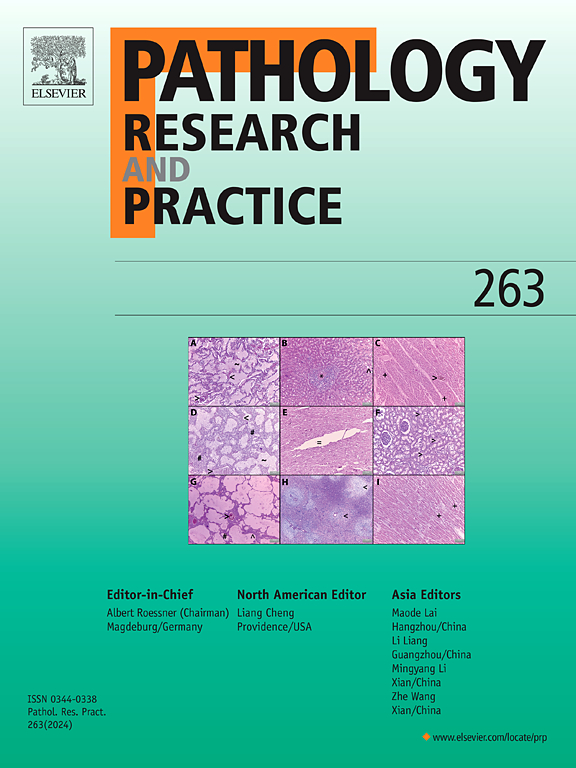Deciphering the value of anoikis-related genes in prognosis, immune microenvironment, and drug sensitivity of laryngeal squamous cell carcinoma
IF 2.9
4区 医学
Q2 PATHOLOGY
引用次数: 0
Abstract
Background
Laryngeal squamous cell carcinoma (LSCC) is a prevalent malignancy characterized by high metastatic potential and poor prognosis. Anoikis, an apoptotic pathway triggered by detachment from the extracellular matrix (ECM), acts as a barrier against cancer metastasis, so it is necessary to explore the role of anoikis-related genes (ARGs) in LSCC.
Methods
Multivariate Cox regression analysis was used to construct prognostic model. A nomogram integrating risk scores with clinicopathological characteristics was constructed for prognosis. Spearman correlation analysis linked ARGs to the tumor microenvironment (TME) and immune infiltration. We also predicted IC50 values for various chemotherapeutic agents by risk group and selected three drugs (LGK974, OSI-027, and OF-1) for molecular docking with MMP3. TCGA datasets was used to evaluate the expression profile of MMP3 and TIMP1 in LSCC. In vitro assays were conducted to confirm the function of target gene in LSCC.
Results
We identified 19 ARGs associated with LSCC prognosis and developed a prognostic model, which subsequently classified patients into high- and low-risk groups based on median risk scores. Nomogram we established demonstrated excellent predictive performance. Low-risk individuals exhibited significantly higher immunophenotype (IPS) scores and elevated levels of immune cell components than high-risk counterparts (p < 0.05). MMP3 demonstrating strong binding affinity with selected drugs. Analysis of TCGA datasets revealed higher TIMP1 and MMP3 expression in LSCC tissues.
Conclusions
Our prognostic signature effectively predicts LSCC prognosis, with MMP3 identified as a potential novel biomarker for LSCC treatment. Furthermore, our findings underscore the critical role of immune-based therapies in improving outcomes, especially for low-risk patients.
求助全文
约1分钟内获得全文
求助全文
来源期刊
CiteScore
5.00
自引率
3.60%
发文量
405
审稿时长
24 days
期刊介绍:
Pathology, Research and Practice provides accessible coverage of the most recent developments across the entire field of pathology: Reviews focus on recent progress in pathology, while Comments look at interesting current problems and at hypotheses for future developments in pathology. Original Papers present novel findings on all aspects of general, anatomic and molecular pathology. Rapid Communications inform readers on preliminary findings that may be relevant for further studies and need to be communicated quickly. Teaching Cases look at new aspects or special diagnostic problems of diseases and at case reports relevant for the pathologist''s practice.

 求助内容:
求助内容: 应助结果提醒方式:
应助结果提醒方式:


